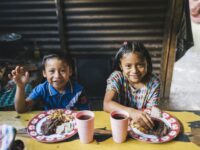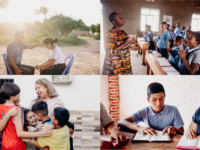Being illiterate can make the world a scary place. A church in Bolivia discovered many of the mothers enrolled its Child Survival Program couldn’t read or write the official language of the country. But with our help, these mothers are bravely facing a brighter tomorrow.
January 21, 2014







1 Comment |Add a comment
I cannot say or agree that illiteracy makes the world a scary place for a person. Those that are illiterate learn to how to survive in the world and have been surviving “forever.” Someone that is illiterate may not survive in the world on the same scale as someone with a college degree, but they usually make it through life. In the Love Literacy video/blog it is sad to hear that mothers because of their illiteracy are afraid of giving their children wrong answers to homework. It is wonderful-almost tearful watching these mothers wanting to learn how to read and having their children on their laps while they learn. The Child-Support Program is a great program for improving literacy. These mothers will be able to do so many things that most of us take for granted such as: helping their children with homework, read information sent home from school, ride the bus and being able to “read” where you are, and understanding information they receive during visits to the doctor. The Child-Support Program provides priceless opportunities for mothers that otherwise would not receive an education. Hopefully, the mother’s efforts to become literate will break a cycle of illiteracy and poverty for their children and families.